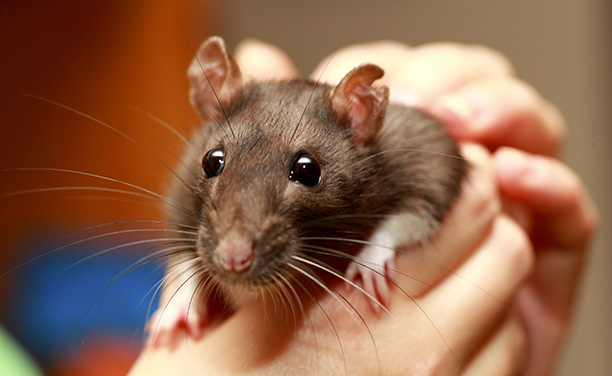

Your pet rat very well may be fancy, but the term "fancy rat" comes from the term "animal fancy" (in this case, "rat fancy"), which is a representation of apprecation for these intelligent and cuddly rodents. Rats as pets are a relatively recent phenomena, but domestication has led to some remarkable changes. Domesticated rats from a reputable source are calmer around people and stimuli (a light going on, a sudden noise), will seek out their owners on their own, and have physical differences as well: smaller bodies, larger ears, longer tail, and coats in a wide range of colors. Rats are social and should have a cage mate; a same-sex member of the same litter usually works best. They require a cage of 2 cubic feet per rat, minimum (the more the better), well ventilated and with a solid floor. Inside, they should have a water bottle and food bowl that cannot be easily tipped over. For bedding, a commercial bedding like Carefresh or even old cotton fabric without loose threads may work fine, though avoid any wood shavings containing phenol, as they can cause respiratory damage to your pets. Being intelligent and energetic critters, your rats will need a stimulating environment -- make sure to supply them with toys, tunnels, hiding places, objects to chew on, and an exercise wheel (large enough for a rat, with a mesh small enough to keep their tails out), and most importantly: make yourself available to bond with your rat. Your rat will live up to 2 years (about double the life expectency of a wild rat), and will eat just about anything, though a diet of lab blocks supplemented with small amounts of fresh fruit, raw and cooked vegetables, meat, cooked eggs, cheese (not all at once, of course) is a great way to get them the proper nutrients and avoid obesity.
 Discover Animals is a web-based educational resource offered by the NAIA
Discover Animals is a web-based educational resource offered by the NAIA